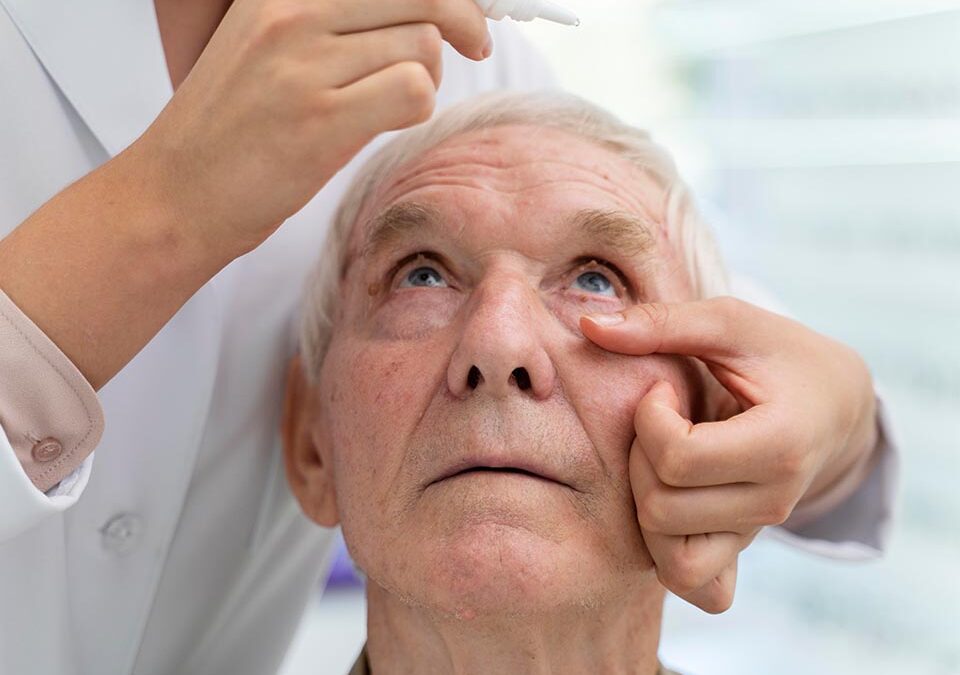
Common Skin Conditions That Pose A Higher Risk For Diabetes Patients
February 11, 2022
Forgot To Take Your Diabetes Medication? Here’s What You Should Know
February 11, 2022Age-related macular degeneration (or AMD) is a significant cause of severe loss of vision among the elderly population. Diabetes is a common disorder of the endocrine system with grave consequences, and diabetic retinopathy (or DR) is the primary ophthalmic complication. Both diabetic retinopathy and macular degeneration are completely different. Here we seek to explore the precise relationship between diabetes and AMD.
What is AMD?
AMD is a disease of the eye, wherein blurring of your central vision occurs. It is caused when ageing leads to the damage of the macula (which is a part of the eye that is responsible for controlling sharp, straight-ahead vision). The macula is a part of the retina (which is the light-sensitive tissue at the back of your eyes).
AMD is quite a common condition: it is a leading cause of loss of vision for elderly individuals. AMD does not cause total blindness; however, losing your central vision can make it quite difficult to see faces, drive, read, or engage in close-up work such as cooking or fixing things around one’s home.
Types of AMD
AMD is, by far, the most common cause of legal blindness in Western patients who are over 65 years of age. The disease significantly impacts an individual’s visual acuity and quality of life. That said, there are two types of AMD: wet (neo-vascular) and dry (atrophic). Dry AMD is a more frequent type of AMD, whereas wet AMD represents nearly 10% of all AMD patients. It is dry AMD that is responsible for most of the cases with acute visual impairment as well as legal blindness.
Delving Deeper Into AMD
AMD has eventually become a primary cause of irreversible visual impairment among elderly people throughout the world, leading to a severe socio-economic burden when it comes to eye care. AMD can be further classified into two stages: early and late. Individuals with early AMD are generally asymptomatic, while severe loss of vision occurs frequently in its late stage. There are multiple risk factors that are associated with AMD, including age, systemic diseases, ocular dysfunctions, smoking, diet, and genetic as well as environmental factors.

Diabetes And AMD
While numerous reports demonstrated a positive correlation between diabetes and AMD, some different reports demonstrated no such effect. Researchers, over the years, have conducted meta-analyses to assess if diabetes is a risk factor for AMD. The effects of diabetes on the overall risk of AMD in all these studies were found to be highly consistent.
Diabetes is a primary concern when it comes to ophthalmic care. That being said, whether diabetes contributes to the increasing prevalence of AMD is found to be inconclusive. Some studies have found that diabetes is truly a risk factor for AMD, especially neo-vascular or wet AMD.
It should also be noted that the contribution of diabetes to early AMD is inconsistent among studies. Those with diabetes have an increased occurrence of early AMD, according to a Korean study. No similar associations have been noted in other studies.
On A Final Note
Age-related Macular Degeneration (or AMD) is an eye disease that is characterised by blurring of your eye’s central vision. There are two types of AMD: neovascular (or wet AMD) and atrophic (or dry AMD). This eye condition generally occurs in the elderly population. Several studies have been conducted to find a link between diabetes and AMD. Some meta-analyses indicate that diabetes is a potential risk factor for AMD, especially when it comes to its later form. That said, there is no identification of any clear association between diabetes and early AMD. More studies need to be conducted to ascertain the precise association between diabetes and AMD. Moreover, biological studies that involve the inflammatory pathways may help in understanding the molecular basis behind this association.
References:




